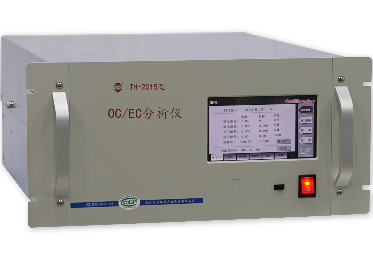Collect a certain volume of ambient air and collect the fine particles in the air onto the filter membrane. At the end of sampling, helium carrier gas is introduced to purge the residual air in the system to make the filter membrane in an oxygen free environment; then the filter membrane is gradually heated to volatilize OC on the filter membrane and enter the oxidation furnace to generate CO2; then helium and oxygen mixture is added into the carrier gas to make the filter membrane in an aerobic environment, and then the filter membrane is heated step by step, so that the EC on the filter membrane can be oxidized to escape and enter into oxidation The furnace generates CO2. At the end of the heating process, the internal standard substance with fixed volume and known concentration is automatically introduced into the system, and the internal standard substance enters into the oxidation furnace to generate CO2. In order to correct the error caused by OC carbonization, during the heating process, the laser transmitter always emits a laser beam with stable intensity, which is transmitted (or reflected) through the filter membrane and reaches the laser receiver. The laser receiver monitors the signal intensity of transmitted (or reflected) laser: after heating, the signal intensity of transmitted (or reflected) laser firstly decreases with the carbonization of OC, and then increases with the oxidation of EC. When it returns to the initial strength before the start of temperature rise, it is considered that all the carbonized OC is oxidized and decomposed, and this time is taken as the dividing point between OC and EC. The system uses non dispersive infrared detector to monitor the concentration response of carbon dioxide generated by OC, EC and internal standard, and calculates the final concentration of OC and EC according to the proportion between the peak areas of the three CO2 concentration response and the known content of the internal standard.


































